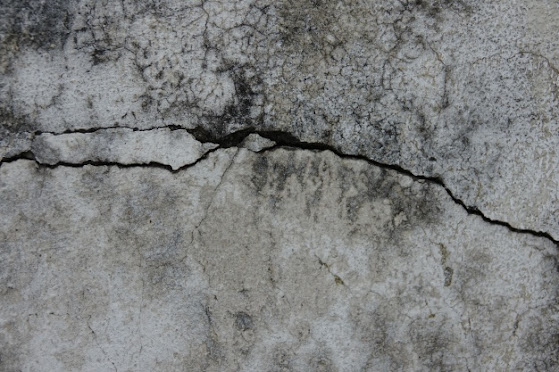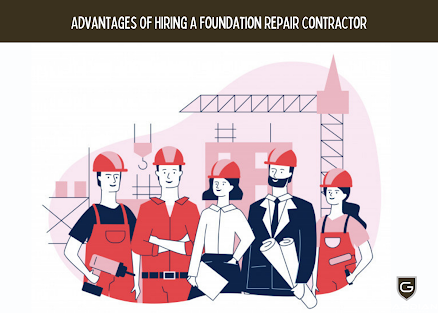What do structural cracks mean?
In the house, many kinds of structural cracks can be identified. Still, what do these cracks all mean? Which structural damages are severe, and what types of cracks should we be less worried about?
In a building, there are many kinds of cracks: ceiling cracks, wall cracks, cracks in the basement, and cracks in the foundation. Then, each crack has a different structure: horizontal, diagonal, stair crack, etc. What type of damage are you worried about? To understand the difficulties you can face when it comes to your base, let's explore the particular kinds of cracks.
- Ceiling Cracks
Ceiling cracks are very prominent and may be due to unresolved exposure to moisture and overall degradation over time. These cracks are usually tiny and will not do too much damage. Sometimes, however, even ceiling cracks may be attributed to issues with foundations. More often than probably, you need a specialist to inspect the gaps in your home's ceilings.
- Basement Cracks
Do not presume that if you discover a basement crack in your house, it is just a crack. It may potentially be a sign of structural damage, such as soil movement underneath your house. Fixing cracks in the basements would keep your home dry and, eventually, safer. Most significantly, this usually means more significant damage has already occurred until water leakage occurs, and bowing walls emerge.
- Vertical Crack Vs. Horizontal
About the variety of cracks, nothing can be said. What cracks are worse is one of the occasional discussions. A lot can be said about diagonal cracks and horizontal cracks. So, what difference is there? Usually speaking, vertical cracks are very typical in direct connection with foundation repair. By comparison, horizontal cracks are typically caused by uneven soil strain, which is often considered a more severe problem.
- Wall Cracks
Wall cracks are a symbol of a base that is shifting. Consequently, base settlement, bowing and leaning walls, and heaving or moving movement are the fundamental causes of wall cracks. These triggers can lead to more severe problems, so you must contact a foundation professional sooner rather than later.
- Foundation Cracks
At all times, foundation walls are under tremendous pressure; also, the wall's age plays a massive part in the amount of damage. The most difficult cracks to examine are possibly foundation cracks.
Cause for Structural Cracks
#1 Thermal movement
When they are heated, most materials expand and compact when they are cooled. Irrespective of the cross-sectional area of the system, there is expansion and contraction with temperature changes. In buildings that require attention, it is one of the most potent causes of cracking.
#2 Chemical reaction
Chemical reactions can occur due to the chemicals or materials used to manufacture the concrete. After it has hardened, it comes into contact with the concrete. Consequently, slowly developing expansive reactions between aggregates containing active silica and alkalis derived from cement hydration, admixtures, or external sources, concrete can crack with time.
#3 Earthquake
Due to a sudden change in the lower layer of the earth, a crack can occur. The spaces in the universe could instantly collapse and be filled with the above soil. Most geological events can cause earth movements, but the action is constant.
#4 Poor construction
Because of indifference, irresponsibility, greed, or incompetence, there is a general lack of acceptable building practices. The building agency and the developer need to ensure the high-quality material selection and good construction practices for a safe building.
#5 Shrinkage
As they absorb water from the environment and shrink when they are dry, most building materials broaden. There may be plastic or dry shrinkage.
#6 Quantity of cement
The stronger the mixture is, the stronger the shrinkage/drying would be, as a general matter.
#7 VegetationDue to the extensive motion of roots growing under the base, fast-growing trees may often cause cracks in walls in the area around the walls. Due to moisture contained by roots, damages occur in clay soil.
Conclusion:
The Guardian Foundation Repair group has good knowledge of restoring foundations and basements. They recognize the defects with various soil types and the problems that arise from clogged drains and leakage. Our committed foundation repair experts can meet one's needs.
Ceiling cracks are very prominent and may be due to unresolved exposure to moisture and overall degradation over time. These cracks are usually tiny and will not do too much damage. Sometimes, however, even ceiling cracks may be attributed to issues with foundations. More often than probably, you need a specialist to inspect the gaps in your home's ceilings.
- Basement Cracks
Do not presume that if you discover a basement crack in your house, it is just a crack. It may potentially be a sign of structural damage, such as soil movement underneath your house. Fixing cracks in the basements would keep your home dry and, eventually, safer. Most significantly, this usually means more significant damage has already occurred until water leakage occurs, and bowing walls emerge.
- Vertical Crack Vs. Horizontal
About the variety of cracks, nothing can be said. What cracks are worse is one of the occasional discussions. A lot can be said about diagonal cracks and horizontal cracks. So, what difference is there? Usually speaking, vertical cracks are very typical in direct connection with foundation repair. By comparison, horizontal cracks are typically caused by uneven soil strain, which is often considered a more severe problem.
- Wall Cracks
Wall cracks are a symbol of a base that is shifting. Consequently, base settlement, bowing and leaning walls, and heaving or moving movement are the fundamental causes of wall cracks. These triggers can lead to more severe problems, so you must contact a foundation professional sooner rather than later.
- Foundation Cracks
At all times, foundation walls are under tremendous pressure; also, the wall's age plays a massive part in the amount of damage. The most difficult cracks to examine are possibly foundation cracks.
Cause for Structural Cracks
#1 Thermal movement
When they are heated, most materials expand and compact when they are cooled. Irrespective of the cross-sectional area of the system, there is expansion and contraction with temperature changes. In buildings that require attention, it is one of the most potent causes of cracking.
#2 Chemical reaction
Chemical reactions can occur due to the chemicals or materials used to manufacture the concrete. After it has hardened, it comes into contact with the concrete. Consequently, slowly developing expansive reactions between aggregates containing active silica and alkalis derived from cement hydration, admixtures, or external sources, concrete can crack with time.
#3 Earthquake
Due to a sudden change in the lower layer of the earth, a crack can occur. The spaces in the universe could instantly collapse and be filled with the above soil. Most geological events can cause earth movements, but the action is constant.
#4 Poor construction
Because of indifference, irresponsibility, greed, or incompetence, there is a general lack of acceptable building practices. The building agency and the developer need to ensure the high-quality material selection and good construction practices for a safe building.
#5 Shrinkage
As they absorb water from the environment and shrink when they are dry, most building materials broaden. There may be plastic or dry shrinkage.
#6 Quantity of cement
The stronger the mixture is, the stronger the shrinkage/drying would be, as a general matter.
Due to the extensive motion of roots growing under the base, fast-growing trees may often cause cracks in walls in the area around the walls. Due to moisture contained by roots, damages occur in clay soil.




Comments
Post a Comment